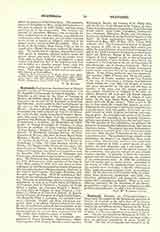

Guayaquil, Diocese of (GUAYAQUILENSIS) Guayaquil, the capital of the Ecuadorian province of Guayas, is situated on the right shore of the Lower Guayas, the estuary of which expands into the Gulf of Guayaquil, and affords the best harbor on the Western South American coast. Next to the capital city of Quito, it is the most important community in Ecuador. The city was founded by Benalcazar in 1535; it numbered 51,000 inhabitants in 1851, and must today have an increased population of about 70,000 or 75,000. The fear of earthquake has caused it to be constructed almost entirely of wood, including even its double-belfried cathedral. As a consequence it has been destroyed several times by fire (the latest recurrences of this were in 1896 and 1902). Steamers from three European and from one New York line visit this port. In 1907 there entered 209 vessels of 416,139 tons (205,412 tons British), while there cleared 208 vessels of 415,179 tons (204,452 tons British) (Statesman’s Year-Book, 1909, 737). Guayaquil has a State national college (a branch institution of the University of Quito), a diocesan seminary for priests, a Dominican convent to which is attached a large church, a Franciscan monastery (founded in 1864 by Fathers exiled from Colombia), which holds at present eight Fathers, an institute maintained by the Salesian Fathers of Don Bosco and known as “The Philanthropic House”, with about fifty boarding pupils and over 600 scholars, etc.
The Bishopric of Guayaquil was established on February 16, 1837, by the separation of this portion from the Diocese of Cuenca. It was first a suffragan of Lima, until January 13, 1849, when it became a suffragan of Quito. The diocese comprises the province of Guayas (districts of Guayaquil, Yaguachi, Daule, and Santa Elena) and Los Rios (districts of Babahoyo, Baba, Vinces, Pueblo Viejo) and covers altogether 11,500 square miles; it numbers 130,900 souls, 40 parishes, 52 churches and chapels, 60 secular priests, and 20 members of the regular clergy, 1 seminary for the priesthood and 4 colleges for boys besides 60 schools. Its first bishop was F. X. de Garaycoa (1838-51), who subsequently went to Quito as archbishop. The diocese then remained vacant through a period of ten years, at the end of which, in 1861, it was given another bishop, in the person of Tomas Aguirre (d. 1868). The latter was succeeded in 1869 by Jose Maria Lizarzabaru, S.J. (d. 1877), who took part in the Vatican Council and was followed, after another interregnum of seven years, by Roberto Maria del Pozo y Martin, S.J. (b. August 28, 1836, at Ibarra, and made bishop, November 13, 1884).
GREGOR REINHOLD

